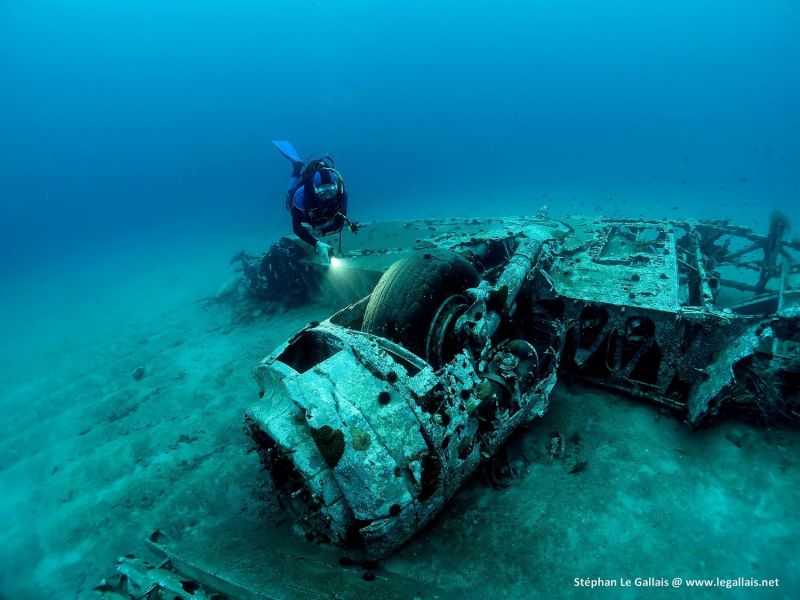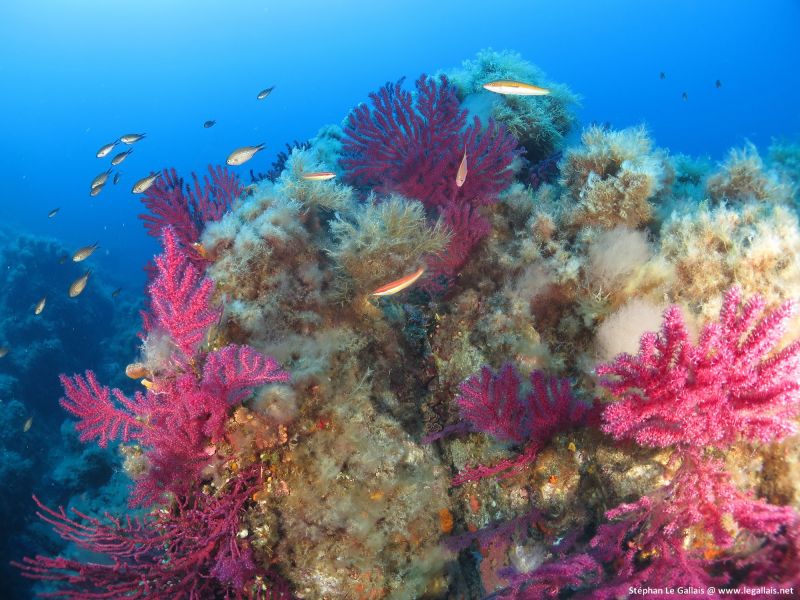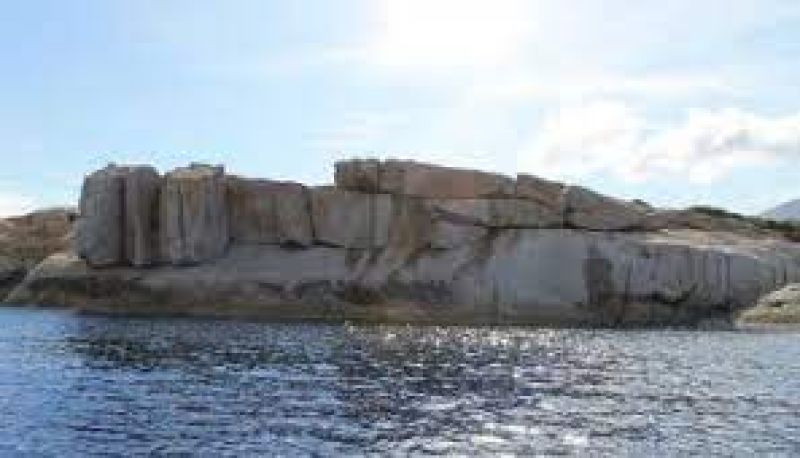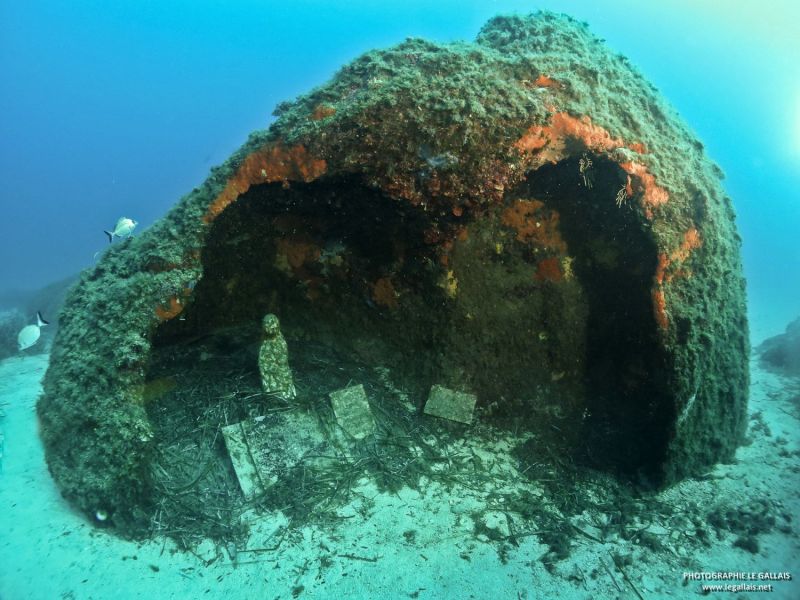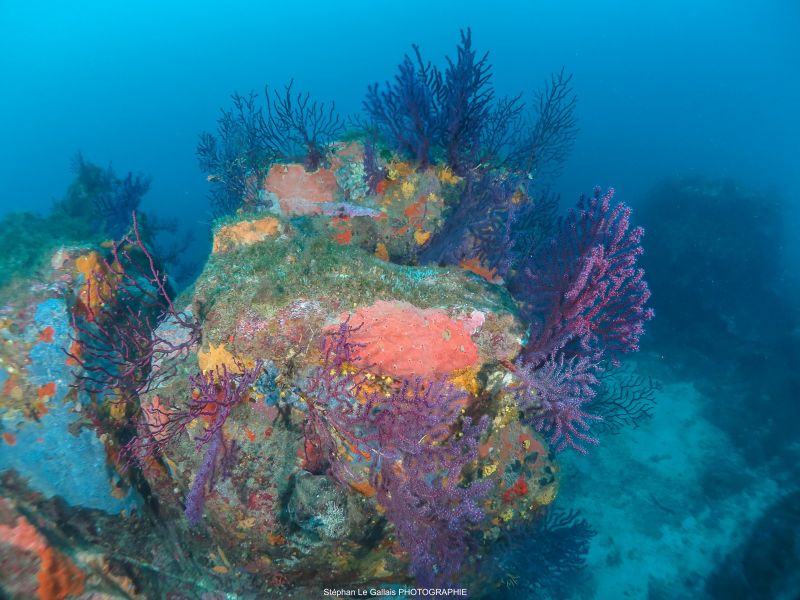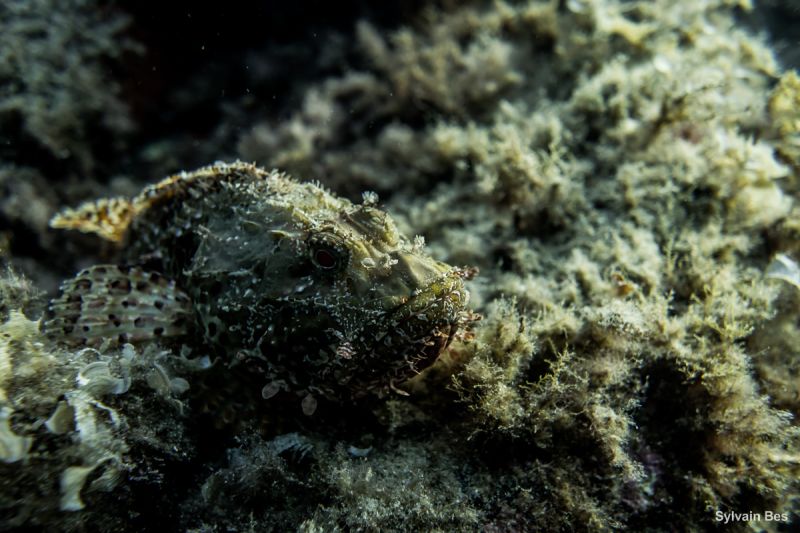Dive spots
Published on Tuesday 15 March 2022
A mountain in the sea is how Corsica is usually described.
With an average water temperature of 14° in winter and rising to 25-26° during the hottest months of July and August, and benefiting from several maritime influences from the four corners of the Mediterranean, Corsica is a paradise for both novice and experienced divers. The bottom of Calvi is a maze of rocky valleys, scree slopes, dizzying drop offs, canyons and faults, colonized by a grandiose Mediterranean fauna and flora: groupers, liches, schools of barracudas but also sponges, gorgonians, flower anemones and so on.
The B17, the "flying fortress" at the foot of the Genoese fortress
The Corsican coasts are littered with aircraft and shipwrecks, mainly dating from the two world wars. The waters of Calvi hold one of the most precious of them.The B17 (Bombardier 17), also called "Her Did", is a mythical dive on an American plane wreck accessible less than 5 minutes from the port. With two engines hit by German fire near the Italian coast, the American bomber chose nearby Corsica and attempted to land on the runway of the Calvi plain. Quickly judged too short for such a plane, it went back on the throttle and the third engine, already damaged, finally gave out.
In constant loss of altitude, the pilots decided to ditch the plane near the city, which would save the rest of the crew. It sank slowly at the foot of the ramparts of the citadel of Calvi and was deposited at a depth of 28 meters on February 14, 1944. The wreckage is in a remarkable state with the wings still attached to the fuselage despite the violence of the shock, as well as the 4 engines and the cockpit unharmed with the pilots' seats and its flight controls. The tail is gone and some propellers have their blades cut. The silhouette can be seen as soon as it arrives at a depth of 20m, from where the imposing hull with its 32m wingspan stands out against the sandy bottom. Little life has colonized the wreck to date, although we can see the usual Mediterranean fauna such as castagnoles, wrasse, serrans, and sometimes a lobster, a capon, a moray eel... and beautiful encrusting sponges coloring the plate.Anchoring is nowadays forbidden, and diving boats are the only ones authorized to do so. They have to moor to the floating anchors in order not to damage the wreck, whose cockpit has recently been torn off by a malicious anchor. Not very sporty, this is a dive into history for those who love wrecks and their somewhat mystical atmosphere. Each club in Calvi offers at least one trip per day to this site.Scientists and military "Marines" of the U.S. Army combined their efforts in the fall of 2012 and sent a ship of their army, the USS Grapple in order to probe the bay of Calvi and hope to locate the tail of the aircraft, where the last gunner Tony Duca, who sank that day of the tragedy with the wreckage, was visibly located ... In vain... A commemorative plaque was placed by the American ambassador on top of the ramparts of the Citadel for his fallen soldiers and the search was definitely abandoned.
The tip of Revelatta, the surroundings of the Reserve
The site of Revelatta is probably one of the most beautiful diving sites of Corsica because of its immediate proximity with the natural marine reserve of Scandola. The sites are located in a large canyon between 15 and 35 meters where large cavities and small tunnels shelter a grandiose fauna and flora. It is not uncommon to come across the magnificent mobula rays, also called sea devils (similar to Mantas), which can reach up to 5m in wingspan and weigh 1 ton! The Mediterranean Mobula Mobular species is known for its spectacular jumps out of the water: the males try to go as high as possible in order to fall with all their weight on their belly while making a "flat" and making as much noise as possible in order to attract the attention of the females. A kind of noisy courtship! You can also find eagle rays and the most common ones like the stingray, but also schools of barracudas, some groupers here and there, the curious seahorses and other lobsters, scorpion fishes, tunas and sometimes sunfish which evolve in the asperities of the rock. The surrounding area is full of drop offs covered with red Mediterranean coral and yellow and red gorgonians. A wonder for divers.
The wild creeks of the Revelatta
The LibraryA few steps from the port of Calvi, this site takes its name from its geology: like large books for giants placed on the edge next to each other. Access is only by boat, only 10 minutes from the port of Calvi. The site is full of ideal dives for beginners with a shallow depth between 13 and 23m maximum. The objective is to explore the numerous submerged cavities, with why not, a camera in hand
The point St François, the underwater pilgrimage
An ideal site for all, frequently used by the Calvados centers because of its multiple assets able to satisfy all levels. Baptisms and initiations are found between these waters with passages under rocks for the confirmed ones and as finality a stop at the cave of Our Lady of the Seas which protects the divers. The statue of the Virgin, about sixty centimeters high, was sculpted and donated by Anne-Marie Moretti, a Corsican artist, and deposited by a group of friars from the Corbara convent, who initiated the project.
For the more experienced : Le Sec du Clocher
One of the only deep dives in the bay of Calvi, about 10 minutes by boat from the port in the direction of Lumio. We go down to 35 meters on a plateau with groupers, then we continue along the walls until 50 meters where we find a small coral cave and forests of gorgonians. For experienced divers holding a level 2 or 3 certification and beware of narcosis ("the intoxication of the deep")!
Fins, masks and snorkels
Another marine activity par excellence, snorkeling, from snorkel meaning "snorkel" in English, the essential element to discover the underwater world in complete serenity. Definition: activity of discovery of an underwater space only accompanied by the trio Fins / Mask / Snorkel (PMT) and not requiring diving tanks. This implies that the swimmer does not dive and observes the sea bed from the surface, or during apnea. It is an activity that is inseparable from a stay at sea and requires few resources that allows the discovery of a new world, that of silence, dear to Captain Cousteau. Getting used to blowing into a snorkel is easy on the long sandy beach of Calvi because there are no dangers. You can get the necessary equipment in any of the stores of the port of Calvi. For more activities, we invite you to venture into the wild creeks around Calvi, or better yet, to join a team of professionals who will lead you to the most beautiful sites following our advice below.
The beach of Matahari and its underwater path
The association I Sbuleca Mare gives appointment to the curious and guides us in the crystalline waters of the bay of Calvi accompanied only by a wetsuit, fins, mask and snorkel. For a few euros, follow a state-qualified guide for about 45 minutes for a fun and educational walk for children (from 8 years old) and adults. Meeting point at the Matahari parking lot in Lumio, equipment provided. The Hippocampe diving club of Calvi also offers snorkeling trips on board their diving boats. The supervisors provide a booklet to identify the different species that we meet to make an educational outing against a vacation background.Possibility of learning to dive by starting with a baptism or for the confirmed divers, combine the playful side with the discovery and rent an underwater scooter to feel like a real fish in the water.The Diving Corsica center at the Sant'Ambroggio marina provides you with a boat and a pilot who will take you to sites suitable for snorkeling according to your level and your interest for a duration of 2 hours.
Dive news
For more information on the wrecks lying on the Corsican coast, Stéphane Le Gallais and his team of divers have been photographing them for years and regularly publish beautiful books listing them. The steamship "Balkan", belonging to the Fraissinet shipping company (operating between Marseille and Calvi) with more than 500 passengers on board was torpedoed on August 16, 1918 by a German submarine while it was off Calvi, its final destination being Bastia. Only a hundred or so survivors managed to reach the Calvese coast. A commemorative plaque pays homage to them at the exit of Calvi, in the direction of Ajaccio by the coast at what is called "La Croix des Balkans". The descendants of some of the passengers still live in Calvi. As you can see, Calvi and the Balagne region are full of underwater wonders to be explored either in a tank or by staying on the surface. Each diving club in Calvi offers first time divers, the famous "baptisms", but also training courses for the initiated with the passage of levels. A level 1 of the FFESSM (French Federation of Underwater Studies and Sports) takes only 4 days and 5 dives (theory + sea outings + logbook and license) and allows the novice from 14 years old to equip himself, to immerse, to balance and to evolve up to 20m of depth in full safety while learning the bases of diving. Ideal to initiate and occupy actively the week of vacations of a teenager!And above all, don't hesitate to come to the reception, they will show you the most beautiful snorkeling spots and the beautiful beaches around the Domaine to enjoy the sea and the sun.
© Crédit photos : Sylvain Bes et Stéphane Le Gallais
Latest articles
06 February 2025
02 December 2024
06 April 2023
17 January 2023
Popular articles
22 June 2015
21 April 2017
01 July 2015
22 April 2017
03 November 2014
